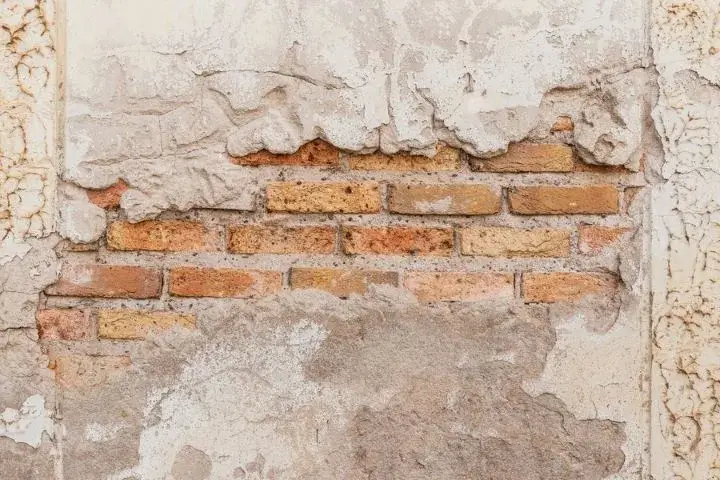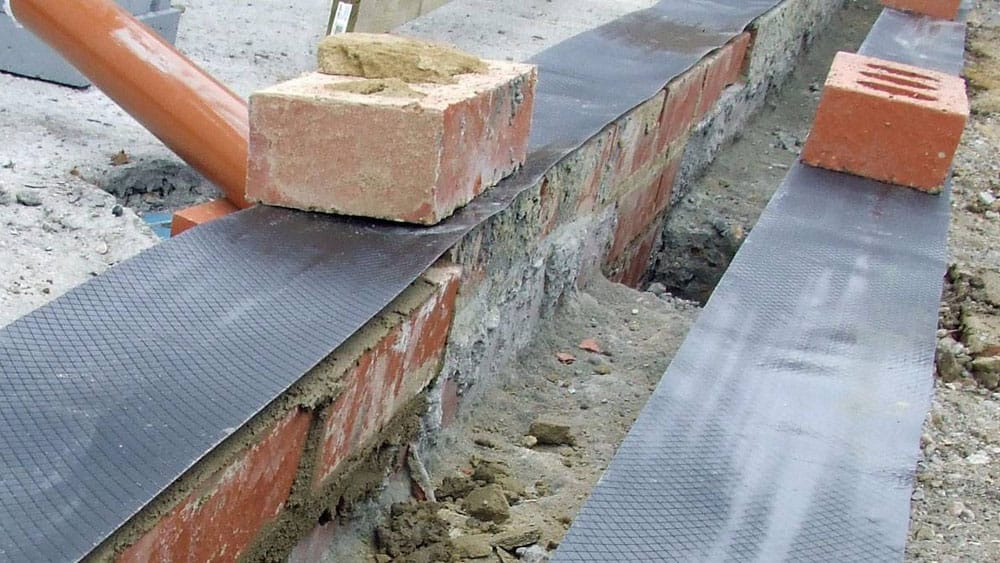Solving condensation problems effectively with mould treatment newcastle
Solving condensation problems effectively with mould treatment newcastle
Blog Article
Exploring the Numerous Techniques and Solutions for Effective Damp Proofing
Dampness in structures postures significant difficulties to both architectural stability and indoor air top quality. Different techniques and solutions have actually emerged to fight this prevalent concern. From conventional damp-proof membranes to ingenious chemical treatments, each approach supplies unique advantages. Understanding these options is important for effective moisture control. Picking the appropriate solution depends on specific structure problems and demands, triggering additional exploration into the most reliable moist proofing strategies readily available.
Recognizing the Reasons For Wetness
Although dampness can arise from numerous sources, understanding these reasons is crucial for effective remediation. Generally, dampness stems from three primary resources: rising wet, passing through damp, and condensation. Climbing moist occurs when groundwater takes a trip up-wards via porous products, such as brick or stone, usually because of a lack of a reliable obstacle (damp specialist newcastle). Penetrating moist is generally brought on by external aspects, including roofing leaks, damaged gutters, or damaged walls, allowing water to infiltrate a home. Condensation, on the various other hand, arises from excess wetness in the air, typically worsened by inadequate air flow and temperature level differences, leading to water beads creating on surfaces. Recognizing these underlying concerns is important, as each type of moisture requires a customized approach for removal. Appropriate assessment helps in determining one of the most effective remedies, inevitably guarding the structural integrity of a structure and enhancing interior air top quality
Traditional Damp-Proof Membranes
crop-file138562.png)
Chemical Damp-Proofing Solutions
Chemical damp-proofing remedies use an innovative strategy to avoid moisture breach in structures. These techniques generally include the application of fluid chemicals that permeate masonry and create an obstacle against rising damp. Commonly used chemicals consist of silanes, siloxanes, and various other water-repellent agents that respond with surface materials to develop a hydrophobic layer.The application procedure usually needs boring openings right into the wall surfaces, infusing the chemical solution, and enabling it to heal. This technique is especially advantageous for older structures where standard damp-proof membranes may be not practical. In addition, chemical damp-proofing can be less turbulent and much more affordable than comprehensive renovation projects.While effective, these remedies rely on correct application and ecological conditions for peak efficiency. Regular upkeep and monitoring are important to ensure the durability of the damp-proofing therapy. Overall, chemical damp-proofing represents a versatile option for guarding structures against moisture-related damages
Cavity Wall Surface Building And Construction Techniques
Cavity wall surface building strategies provide many benefits, particularly in moisture control and energy performance. By incorporating an air space in between 2 layers of masonry, these walls properly reduce water ingress while improving insulation. This combination not just protects structures from moisture however likewise adds to reduced energy intake.
Advantages of Cavity Walls
When taking into consideration reliable wet proofing methods, the advantages of cavity walls stick out plainly. Dental caries wall surfaces are composed of 2 different layers, creating an air gap that efficiently minimizes dampness infiltration. This layout decreases the risk of wetness, as the external wall surface acts as a barrier against rainfall and water access. Furthermore, dental caries wall surfaces boost thermal insulation, which adds to power effectiveness by lowering warmth loss. They also provide sound insulation, aiding to develop a quieter interior atmosphere. Additionally, the air space permits air flow, which assists in dampness control and minimizes the possibility of mold growth. These advantages not just improve the general convenience of a building but also contribute to its longevity and structural stability.
Wetness Control Strategies
Efficient wetness control methods are important in cavity wall construction to ensure long-lasting protection versus wetness. One primary method entails the consolidation of weep holes, which facilitate water drain from the dental caries, stopping build-up. Additionally, making use of breathable membrane layers can help manage wetness degrees while permitting trapped vapor to get away. Appropriate placement of insulation is additionally vital, as it needs to not obstruct drainage paths. Moreover, guaranteeing that the external leaves of the cavity wall are constructed with waterproof products boosts overall resilience. Routine upkeep checks are important to recognize any type of blockages or damages early, safeguarding the structure's integrity. Ultimately, a mix of these strategies creates a durable protection against moisture intrusion in cavity walls.
Insulation and Power Performance
Insulation plays an essential duty in boosting power performance within dental caries wall surface construction. By incorporating insulating materials, these walls create a thermal barrier that minimizes warmth loss and reduces power intake. Reliable insulation not just aids preserve a steady indoor temperature but additionally minimizes the threat of wetness, as it protects against condensation within the wall surface dental caries. Different methods, such as the usage of rigid foam boards or mineral woollen, can be employed to attain excellent insulation efficiency. In addition, appropriate installation is important to assure that spaces and gaps are decreased, which can otherwise compromise power effectiveness. Inevitably, a well-insulated cavity wall adds greatly to total sustainability and reduces cooling and heating costs for house owners.
External Damp Proofing Methods
External moist proofing approaches are important for securing frameworks from wetness seepage. Two efficient strategies consist of the application of water-proof membrane layers and the setup of French drains. These services assist mitigate water buildup and protect the honesty of buildings.
Waterproof Membrane Application
While different approaches exist for avoiding wetness access, the application of waterproof membranes continues to be a highly effective external moist proofing strategy. These membrane layers are typically made from products such as polyethylene, rubber, or changed asphalt, providing a robust barrier against water infiltration. The installment procedure involves applying the membrane to the outside surface areas of wall surfaces or structures, making certain complete insurance coverage to protect against leakages. Correct attachment and securing at joints are important to taking full advantage of performance. Waterproof membranes can be applied in various kinds, including fluid coatings and sheet membrane layers, enabling versatility based upon the specific requirements of the structure. This technique not only secures structures from dampness however likewise improves their long life and architectural honesty.
French Drainpipe Setup
One efficient method for managing groundwater and protecting against wetness accumulation around a building's structure is the installment of a French drainpipe. This water drainage system includes a trench loaded with gravel and a perforated pipe that redirects surface area water far from the foundation. Appropriate setup calls for cautious preparation, making certain that the drain slopes far from the framework to promote ideal water circulation. In addition, the place of the drain is important; it should be placed in locations vulnerable to pooling or excess moisture. Normal upkeep, including clearing up debris from the crushed rock and making sure the pipe continues to be unblocked, is necessary for long-term performance. Eventually, a well-installed French drainpipe can significantly lower the danger of water-related issues in cellars and foundations.
Interior Waterproofing Approaches
Interior waterproofing strategies are crucial for safeguarding a structure's inside from wetness seepage and prospective water damages. These techniques commonly entail the application of specialized products and techniques developed to produce a wetness obstacle within the framework. One typical strategy is the usage of water resistant finishes or sealers on wall surfaces and floorings, which protect against wetness from permeating surfaces.Additionally, installing indoor water drainage systems, such as sump pumps, can properly manage water build-up in basements and creep spaces. Another method includes using vapor obstacles, which are set up to hinder dampness movement from the ground into living spaces.Moreover, resolving any cracks or spaces in walls or structures with proper sealers assures a complete defense against water intrusion. By carrying out these indoor waterproofing strategies, homeowner can significantly lower the risk of mold and mildew growth, structural damage, and various other moisture-related problems. Appropriate execution of these methods is necessary for lasting protection and structure integrity.
Regular Upkeep and Evaluation Practices
Routine maintenance and evaluation practices are essential for guaranteeing the long-lasting efficiency of moist proofing services in any kind of structure. Regular checks allow homeowner to identify very early indications of moisture intrusion, such as peeling off paint, mold and mildew development, and moldy odors. These indications can indicate underlying issues that call for instant attention.Inspections ought to be conducted at the very least every year, concentrating on at risk locations like basements, crawl rooms, and outside walls. During these analyses, residential or commercial property owners should analyze sealants, water drainage systems, and air flow to verify they operate correctly.Additionally, keeping downspouts and seamless gutters is necessary, as blocked systems can bring about water build-up near the foundation. Applying a routine upkeep schedule, in addition to timely fixings, can significantly expand the lifespan of moist proofing measures and secure the structural stability of the structure. Proactive procedures ultimately add to the total health and wellness of the living atmosphere.
Frequently Asked Concerns
How Much Time Does Damp Proofing Normally Last?
The duration of damp proofing effectiveness varies, typically lasting in between 20 to half a century. Variables such as application high quality, environmental problems, and upkeep practices greatly affect the longevity of the moist proofing therapy.

Can I Damp Evidence My Home Myself?
The private contemplated the feasibility of DIY damp proofing. With correct study and the best products, it is possible. They additionally recognized the value of professional assistance to assure lasting efficiency and prevent future problems.
What Are the Indicators of Ineffective Damp Proofing?
Indications of inadequate moist proofing consist of persistent stuffy odors, noticeable mold growth, peeling off paint, damp patches on wall surfaces, and timber decay - mould treatment newcastle. Property owners need to address these problems promptly to avoid more damage and health worries
Does Damp Proofing Affect Indoor Air High Quality?

Just How Much Does Professional Damp Proofing Expense?
Specialist damp proofing expenses differ substantially, commonly ranging from $1,000 to $5,000 depending upon the property's size, the degree of the wet concern, and selected approaches. Each scenario requires a tailored evaluation for exact rates. Frequently, wetness originates from three main resources: climbing damp, penetrating moist, and condensation. When thinking about reliable wet proofing approaches, the benefits of cavity walls stand out prominently. External moist proofing techniques are crucial for protecting structures from dampness infiltration. While numerous techniques exist for preventing wetness access, the application of water-proof membrane layers stays an extremely effective external damp proofing strategy. Indicators of ineffective damp proofing include consistent stuffy smells, noticeable mold read more and mildew growth, peeling paint, damp spots on wall surfaces, and timber decay.
Report this page